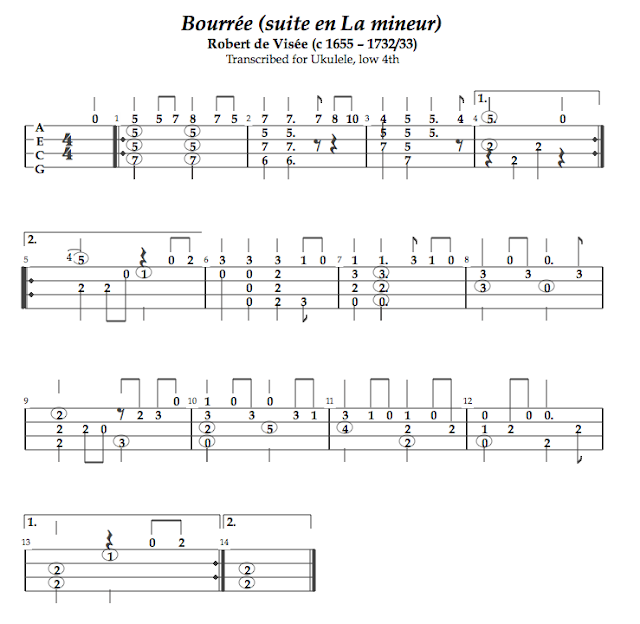 |
| The first few bars of a contemporary copy by Matthew Holmes, to give you an impression of the original lute MS. (The label covers the end of a previous piece, as the pieces are contiguous, presumably to save paper.) The first two strings of the lute translate directly to the uke, so you can compare it with my translation below. The lute symbols are: a = open string, b = 1st fret, c (looks like r) = 2nd fret, d (looks like j without a dot) = 3rd fret, and so on. In the indication of note length, they used one more tail or beam than we do. You can see a full facsimile of the original here. |
 |
| An image of the tabs for the first section of the piece. The full version can be downloaded by clicking on the links below. |
As usual, reducing the lute version has entailed great simplification, but I have tried to retain the several voices, and the sweet transient dissonances, where I can. I find it is not always possible to hold the bass notes for as long as I might want. The tabs give a reasonable impression of the music, but the notation shows the note lengths and voices more clearly.
The structure is a simple one: a, a', b, b', c, c', with the primes indicating a slightly more decorated variation.
It's available in pdf (preview), pdf auto download, MIDI and TablEdit formats. I hope you enjoy playing it as much as I do.


